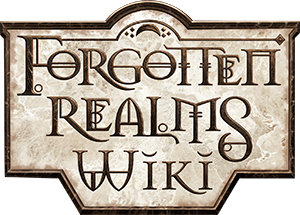Chaosmancer
Legend
Context is your friend. We are discussing the sentence about Apendix B, so no, any elven ancestor would not apply. Also, the elven court is not any of the three categories of quasi-divine beings. They are not demigods. They are not titans. And they are not vestiges. If you're going to be a stickler about demigod, you can't turn around and declare that beings that don't fit into any of the three categories are quasi-divine beings. If you can add them, I can add in The Red Knight and others as demigods.
Which is it?
a) I agree context is your friend. We are referring to rules for a background that is general use. Additionally, "elven ancestors" would still be wrong, because again it implies that any elven ancestor from Aerenal (using the Eberron Context) counts, and they don't the Undying Court is very specific. And this still does nothing to address the Blood of vol or the Path of Light.
b) I agree that the Eberron model doesn't fit into the standard DnD model of divinity. They do not fit into any of the categories presented, because "Extremely powerful undead conglomerate sustained by the faith and love of their people" isn't one of the three standard options. HOWEVER, The Red Knight and other beings DO fit into the standard model. They fit perfectly in as Lesser Gods. Nothing about their role, existence, ect is contradicted by being Lesser Gods. Especially as DnD 5e has redefined the terms. Even being Exarchs doesn't change this, as we have had Greater Gods who were exarchs in 4e.
What you have to let go of is that 5e is using the same terms in the same way as older editions. At this point, it is very clear they are not, and have never been.
As a CR 9 monster? Nope.
Again "single member of the Court" =/= "The Entire Court". And, if you bothered to learn about the Undying Court, you would know that their power comes from cooperation.
You argument here is like saying that US military is weak because a single Marine with a rifle isn't that strong. A single member of the court is not the entirety of the Court.
You can't assume a change. You have to be able to prove a change. Not everything changed.
Obviously not everything changed. But the definition of Demigod DID change, and we have proven that. And the beings that were listed as Demigods are no longer listed as demigods and we have proven that. I truly don't know what more evidence you need of a change than the literal changes that I have shown you. 5e isn't 4e or 3.5 or 2e or 1e. Demigods in 5e aren't the same as the demigods of other editions.
Oookay, like that's what I said.
So why is she worshiped? She's a glorified Deva messenger then, who does nothing for the people. Why does she have a church and priests? Why would Tempus put up with her temples and worship when he is the one doing all the work. This is like the people of a medieval town treating the Royal Messenger as though he was the King. It is completely insane.
It also flies in the face of the information we are given in the Sword Coast guide, which indicates she is worshiped because while she works with Tempus, she is also still a deity who answers prayers and grants spells. Nothing in the Sword Coast says that Tempus does these things for her, you are just making that up to justify calling her a Demigod, when 5e has changed the definition of Demigod.
No he hasn't. He has been portrayed to have an empire, and to have worshippers, but nothing says that the entire empire worships him. That's you making gross assumption.
If you mean "every man, woman, child and dog" then sure. But I think it is a far bet to say over 50% of the empire worships him. That's kind of how this "state religion enforced by a tyrant" thing works.
And, no, I am not going to except "but he's evil and people don't like him, so they aren't REALLY worshiping him" because as established, multiple times, that would apply to almost every single evil deity in Greyhawk who do the same things. If there are enough people willing to worship the god of "I want everyone to get sick with terrible diseases and die" to make him a Greater God, then I'm pretty sure that "Worship me because I have built an empire and am incredibly powerful" can get a large following from the populace, even if he does do standard bad guy things.
Edit: Also, quite literally everything Pemerton just quoted.

